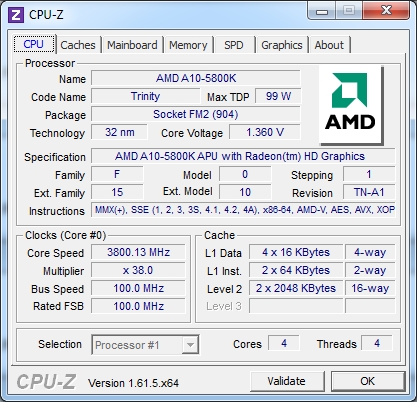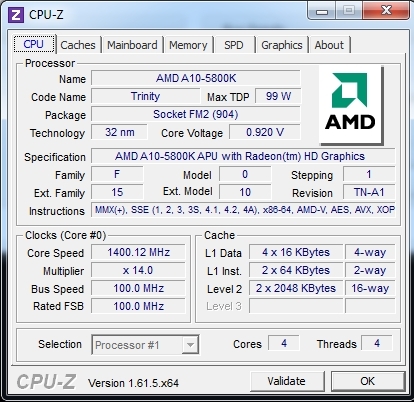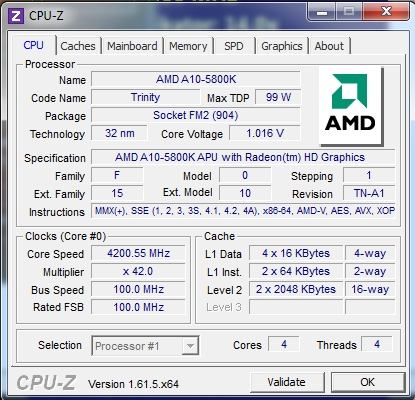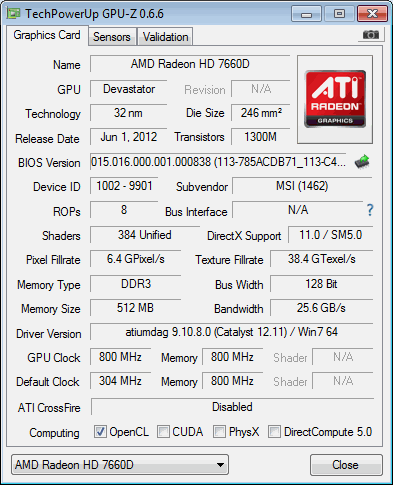Index


Review: It’s all about value
Today we’ll have some fun with AMD’s latest desktop APU, the Trinity based A10-5800K. Launched two months ago, the new chip features Piledriver CPU cores with revamped Radeon graphics. It’s also AMD’s first APU to fit the new FM2 socket (904 pins versus Llano’s 905). So obviously Llano users will not be able to upgrade to Trinity without the added cost of a new motherboard. We used MSI’s FM2-A85XA-G65 to run our benches.
The A10-5800K has four CPU cores and brings support for the latest ISA instructions including FMA3, F16C, AVX, AVX.1, AES. The CPU clock is 3800MHz and the max Turbo frequency is 4.2 GHz.

Turbo Core 3 also got an extensive overhaul. It is more advanced than previous versions and it can identify exactly what part of the APU is under the highest load. In other words, it can detect whether more power is needed for the CPU or GPU part, which should translate into better power efficiency, as it will target different parts of the chip independently.


Trinity also supports DDR3-1866MHz memory and the RAM speed has a significant impact on performance. We already proved this in one of our earlier reviews, so check it out if you need more details.
The A10-5800K features HD7660D graphics, based on Northern Islands Radeon HD6000 series GPUs. It features VLIW4 architecture and of course it is DirectX 11 enabled. The HD7660D features 384 shaders and it is clocked up to 800MHz, depending on the load. It also features the UVD3 video encoder, so it includes a H.264 video encoder and Blu-Ray support.

AMD also allows users to harness HD7660D graphics in tandem with discrete Radeon boards, using the Dual Graphics feature. It basically allows users to boost graphics performance by adding low-end discrete graphics, which is a pretty neat feature for gamers on a budget. AMD Eyefinity is also on board and it delivers 3 + 1 monitor support.
Sadly we didn’t have a comparable Intel CPU handy, so our review will focus on a Trinity vs. Llano showdown instead.



